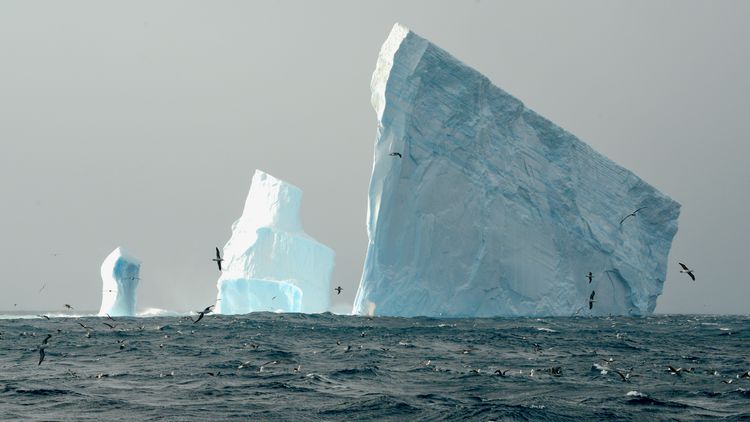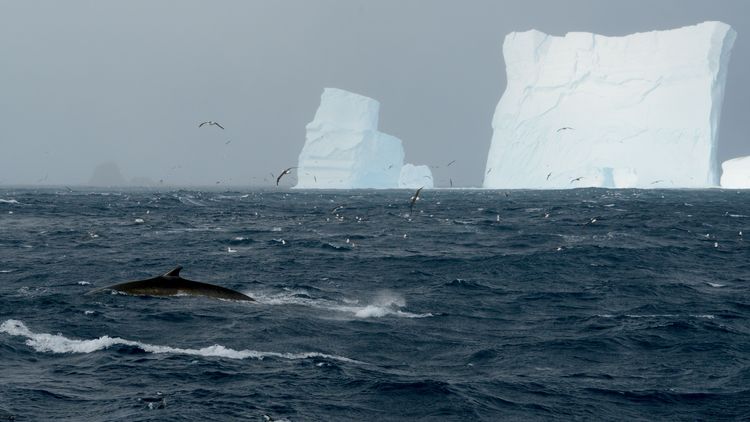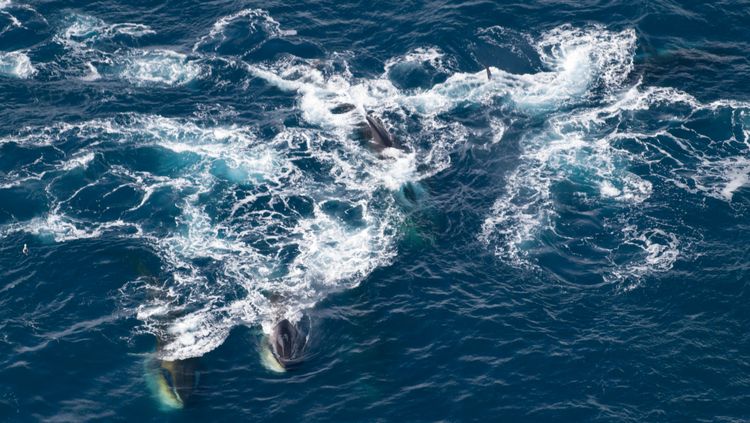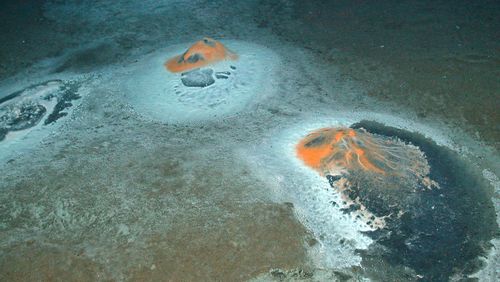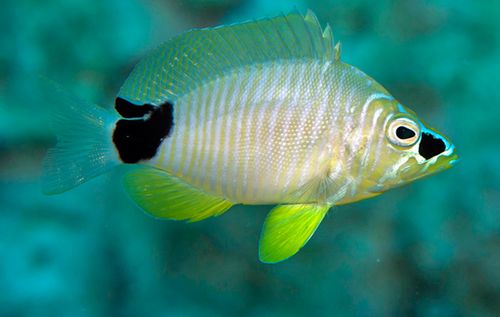For the first time since whaling was banned, a team of researchers and filmmakers has documented large groups of fin whales in the Southern Ocean. The team now presents the results in the scientific journal Scientific Reports.
After blue whales, fin whales are the largest whales in the world – and human beings have hunted both species to near-extinction. After the ban on commercial whaling in 1976, the stocks of these long-lived, but slow-growing creatures are rebounding: in the journal Scientific Reports, researchers and filmmakers jointly present videos and photos of large groups of up to 150 southern fin whales in their historical feeding areas – more than has ever been documented before using modern methods. Given these whales’ key role in nutrient recycling, other species in the Antarctic ecosystem, like the krill, could also benefit from their rebounding numbers.
“I’d never seen so many whales in one place before and was absolutely fascinated watching these massive groups feed,” says the study’s co-author, marine biologist Prof. Dr Bettina Meyer. She heads the research group Biodiversity and Biological Processes of Polar Oceans at the university’s Institute for Chemistry and Biology of the Marine Environment. She also conducts research at the Helmholtz Institute for Functional Marine Biodiversity and the Alfred Wegener Institute, Helmholtz Centre for Polar and Marine Research (AWI). From March to May 2018, Meyer led an expedition with the research icebreaker Polarstern in the region of the Antarctic Peninsula, during which groups of up to 50 or even 70 fin whales (Balaenoptera physalus quoyi) were observed.
Fin whales observed hunting krill
The expedition investigated for example the effects of climate change on the Antarctic krill. The tiny, biolumniescent crustaceans, growing up to six centimetres long, form the basis of the Antarctic food web. They are a prime food source for fish, penguins, seals and whales. During the expedition, a team led by the study’s first author Dr Helena Herr from the University of Hamburg and a camera team from the BBC jointly used the Polarstern’s onboard helicopter for survey flights, counting and filming the whale stocks. On 22 flights, the team covered a total of 3251 kilometres and counted 100 groups of fin whales, consisting of one to four whales each.
In addition, the whale research team kept watch on deck – and spotted a group of ca. 50 southern fin whales near Elephant Island in the Weddell Sea off the Antarctic Peninsula, and later more than 70 in the same spot. “I ran straight to our monitor, which uses acoustic measuring methods to show the presence and size of krill swarms in the water,” recalls Bettina Meyer. “And based on the data, we were able to identify the swarms and even see how the whales hunted them.”
Are fin whale stocks recovering?
But the whales not only eat the krill; they are also of benefit to them: whale excrement fertilises the ocean, since the nutrients it contains – like iron, which is comparatively sparse in the Antarctic – are essential for the growth of phytoplankton (microalgae) in the water. In turn, phytoplankton is a food source for the krill. “When the whale population grows, the animals recycle more nutrients, increasing the productivity of the Southern Ocean. This boosts the growth of algae, which for their part absorb carbon dioxide from the atmosphere through photosynthesis, reducing the atmospheric CO2 concentration,” Bettina Meyer explains.
The recovery of the fin whale stocks seems to be a trend: one year after the Polarstern expedition, the whale research team and the BBC returned to Elephant Island with a chartered ship and observed up to 150 animals. “Even if we still don’t know the total number of fin whales in the Antarctic, due to the lack of simultaneous observations, this could be a good sign that, nearly 50 years after the ban on commercial whaling, the fin whale population in the Antarctic is rebounding,” says Bettina Meyer.
Background Weddell Sea:
The International Commission for the Conservation of Antarctic Marine Living Resources (CCAMLR) aims to establish a network of Marine Protected Areas (MPAs) in the Southern Ocean. The European Union (EU) first submitted an application for an MPA in the Weddell Sea, the Atlantic sector of the Southern Ocean, under CCAMLR in 2016. The scientific data for this proposal were compiled and evaluated by experts from the Alfred Wegener Institute. The application for Weddell Sea MPA application as a refuge for cold-loving species is supported by many states, but has not yet been approved by CCAMLR.
Source: AWI

